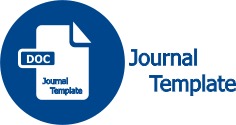FAKTOR INTERNALDAN EKSTERNAL YANG BERPENGARUH TERHADAP KEBIJAKAN HUTANG DAN NILAI PERUSAHAAN (Studi Empiris pada Perusahaan BUMN Non Bank Yang Go-Public di Bursa Efek Indonesia)
DOI:
https://doi.org/10.30651/blc.v13i01.1565Abstract
ABSTRACTÂ
               The purposed of research is analyzing the effect of internal factors and external factors to debt policy and to examine the effect of debt policy to corporate values. This research used the State-Owned Enterprises non bank which is listed in Indonesia stock exchange started the year 2007-2014 with total 10 Companies.Selection sample based on purposive sampling method with the purpose to get sample according to research aim. Based on the certain criteria which are assigned, so we get data pooling with analyze units 80. the analytical technique was multiple regressions.The research results show that external factors which are proxied by inflation rates, gross domestic bruto, interest rate, foreign exchange rate and crude oil prices has significant effect to debt policy. However, Internal factors which are proxied by profitability, corporate size, corporate growth and external factors which is proxied by composite stocks price index has no effect to debt policy. This research has also proved the debt policy has significant to corporate values. State-Owned Enterprises in taking policy on debt is influenced by external factors. The decision to use debt as source of funding will increase corporate value, its appropriate with trade off theory.
Keywords : trade off theory, internal factors, external factors, debt policy and corporate values.
Correspondence to : Inalak06@gmail.com
References
Burger, J. D., Rebucci, A., & Warnock, F. E. (2010). External Capital Structure and Oil Price Volatility. Journal of Bussiness, Finance and Economic in Emerging Economies, 5(2).
Dong, D. Z. (2011). Foreign Exchange Rate and Capital Stucture Decision : A Study of New Zealand Listed Properti Trust. Journal ofPasific Rim Real Estate Society Conference Gold Coast, 17.
Eriotis, N., Vasiliou, D., Ventoura, Z., & Neokosmidi. (2007). How Firm Characteristic Affect Capital Structure : An Empirical Study. Journal ofManagerial Finance, Vol. 33(No. 5), pp. 321-331.
Frank, M. Z., & Goyal, V. K. (2003). Testing the Pecking Order Theory of Capital Structure. Journal of Financial Economics, 67, pp. 217-248.
Gujarati. (2004). Basic Econometrics (Fourth Edition ed.): The Mc Graw-Hill.
Jong, A. D., Kabir, R., & Nguyen, T. T. (2007). Capital Stucture Around The World : The Roles of Firm and Country Spesific Determinants. Journal of Economic Literature, Vol. 41.
Kesuma, A. (2009). Analisis Faktor Yang Mempengaruhi Struktur Modal Serta Pengaruhnya Terhadap Harga Saham Perusahaan Real Estate yang Go Public di Bursa Efek Indonesia. Jurnal Manajemen dan KewirausahaanVol. 11. No.1:pp. 38-45.
Kewal, S. S. (2012). Pengaruh Inflasi, Suku Bunga, Kurs dan Pertumbuhan PDB terhadap Indeks Saham Gabungan. Jurnal Economia Vol. 8 (No. 1): pp. 53-64.
Mahardhika, B. W., & Roosmawarni, A. (2016). Analisis Karakteristik Perusahaan Yang Mempengaruhi Nilai Perusahaan Pada Perusahaan Manufaktur yang Terdaftar di Bursa Efek Indonesia (BEI) Tahun 2010-2014. Balance, 13(02).
Mardiati, U., G. N. Ahmad, et al. (2012). Pengaruh Kebijakan Dividen, Kebijakan Hutang dan Profitabilitas Terhadap Nilai Perusahaan Manufaktur yang terdaftar di Bursa Efek Indonesia (BEI) Periode 2005-2010. Jurnal Manajemen Sains Indonesia Vol. 3(No.1):pp. 1-17.
Masih, R., S. Peters, et al. (2011). Oil Price Volatility and Stock Price Fluctuations in an Emerging Market: Evidence From South Korea. Journal of Energi Economics Vol. 33:pp 975-986.
Miles, D., & Scott, A. (2005). Macroeconomics : Understanding the Wealth of Nations (Vol. 2nd Edition): John Wiley & Sons, Inc.
Mulianti, F. M. (2010). Analisis Faktor-Faktor yang Mempengaruhi Kebijakan Hutang dan Pengaruhnya Terhadap Nilai Perusahaan. Universitas Diponegoro, Semarang.
Pangeran, P. (2010). Pemilihan Sekuritas dan Arah kebijakan Struktur Modal : Pecking Order ataukah Static Tradeoff. Jurnal Akuntansi dan Manajemen, Vol. 21(ISSN : 0853-1259), pp. 1-16.
Rivai, C. W. (2011). Analisis Pengaruh Tingkat Inflasi, Perubahan Produk Domestik Bruto, dan Index Harga Saham Gabungan Terhadap Struktur Modal Perusahaan di Indonesia. Universitas Indonesia, Jakarta.
Sudarma, M. (2004). Pengaruh Struktur Kepemilikan Saham, Faktor Intern Dan Faktor Ekstern Terhadap Struktur Modal dan Nilai Perusahaan. Universitas Brawijaya, Malang.
Sudiyatno, B. (2010). Peran Kinerja Perusahaan dalam Menentukan Pengaruh Faktor Fundamental Makroekonomi, Risiko Sistematis, Dan Kebijakan Perusahaan Terhadap Nilai Perusahaan. Universitas Diponegoro, Semarang.
Suteja, J., & Manihuruk, W. (2009). Pengaruh Struktur Modal, Kepemilikan, dan Faktor Eksternal pada Penentuan Nilai Perusahaan. Journal ofTrikonomika, Vol. 8(ISSN 1411 - 514X), pp.78-89.
Wijaya, L. R. P., Bandi, & Wibawa, A. (2010). Pengaruh Keputusan Investasi, Keputusan Pendanaan dan Kebijakan Dividen terhadap Nilai Perusahaan. Jurnal Akuntansi Keuangan dan Pasar Modal. Simposium Nasional Akuntansi XIII Purwokerto 2010.
Yesniate and N. Destriana (2010). Faktor-Faktor yang Mempengaruhi Kebijakan Hutang pada Perusahaan Non Keuangan yang Terdaftar di Bursa Ekek Indonesia. Jurnal Bisnis dan Akuntansi Vol. 12, No. 1: pp 1-16.
Zang, R. and Y, Kanazaki (2007). Testing Static Tradeoff Against Pecking Order Models of Capital Structure in Japanese Firms. International Journal of Accounting and Information Managemen Vol. 15 No. 2:pp. 24-36.














